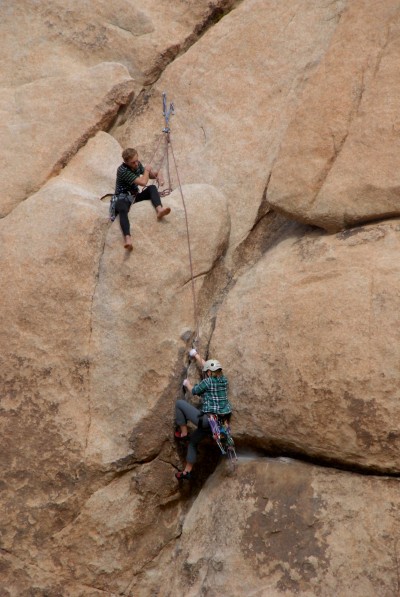
For those just learning to rock climb, it's best to borrow equipment from an expert climber who can give you advice on what to buy while teaching you the basics of the sport.
Every climber has to start somewhere–most of them from the bottom of a cliff face or a gym’s rock wall. Below are some tips for novices to help start their ascent.
Getting started
As with most sports at the more extreme levels, rock climbing is one that should be approached with a great amount of research regarding safety precautions. A great place to start for those interested in testing out climbing is scheduling a visit to a rock wall. Not only is this a convenient learning ground because it’s more likely to be within traveling distance to where the majority of people live, but there are other people learning the sport with you. One of the most common prohibiting factors in learning a new sport is the stress people feel when thinking of competing with experts. Being able to get the feel for the equipment and climb slowly before heading into the outdoors offers a great platform for practice.
Most indoor rock walls offer lessons available at a decent price and they give a well-rounded introduction to the sport. The most basic form of rock climbing is called bouldering and involves less intense techniques on smaller rocks with little in terms of protection, such as a harness, provided. Assisting ropes are often used for safety. The typical way to rock climb is by working with at least one other person and using ropes and anchors to help one another. Once you’ve progressed beyond bouldering, there are a variety of climbing descriptions you should familiarize yourself with.
Different kinds of rock climbing
Aid climbing is the most common method and is characterized by the repeated motion of attaching weighted gear into the rocks that help the climber cover space gradually, which is one of the safest ways to climb. Free climbing, on the other hand, is reliant on the strength of the climber and they have less support through harnessing. They are not as well protected if a fall should occur.
Free soloing is the most dangerous form of climbing, as the person has no measures of protection and most falls in this type lead to intense injuries or even death. Deep-water soloing is also free of safety measures, but it is when the climber is on the side of a cliff, so falling into the water below is not as likely to produce injuries as free soloing. It is suggested to always follow safety precautions when rock climbing and participate in the more traditional kinds of climbing.
Several other options include sport climbing, top rope climbing, simul climbing, and roped solo climbing.
Gear checklist
When first starting out, the only necessary gear is: a pair of shoes, a harness, chalk and a bag, a helmet, a belay device, and a locking carabiner.* Any other gear can be borrowed from the person you are learning to climb from and is best to save for purchase at a later date once you figure out what you prefer. Most rock walls supply all of these supplies at a small fee, so testing it out can be inexpensive. As much of this equipment can get pricey, save the spending until you have passed by the title of beginner. You will need to borrow a rope and anchoring gear along with whatever other supplies are preferred by you or the person you’re learning from. Each climber will have their own personal favorites, so check around with several people.
*Packing will be more extensive if you’re planning on a longer climbing trip.
Image from Jarek Tuszynski on the Wikimedia Commons
 Your Privacy Choices
Your Privacy Choices
 The
The